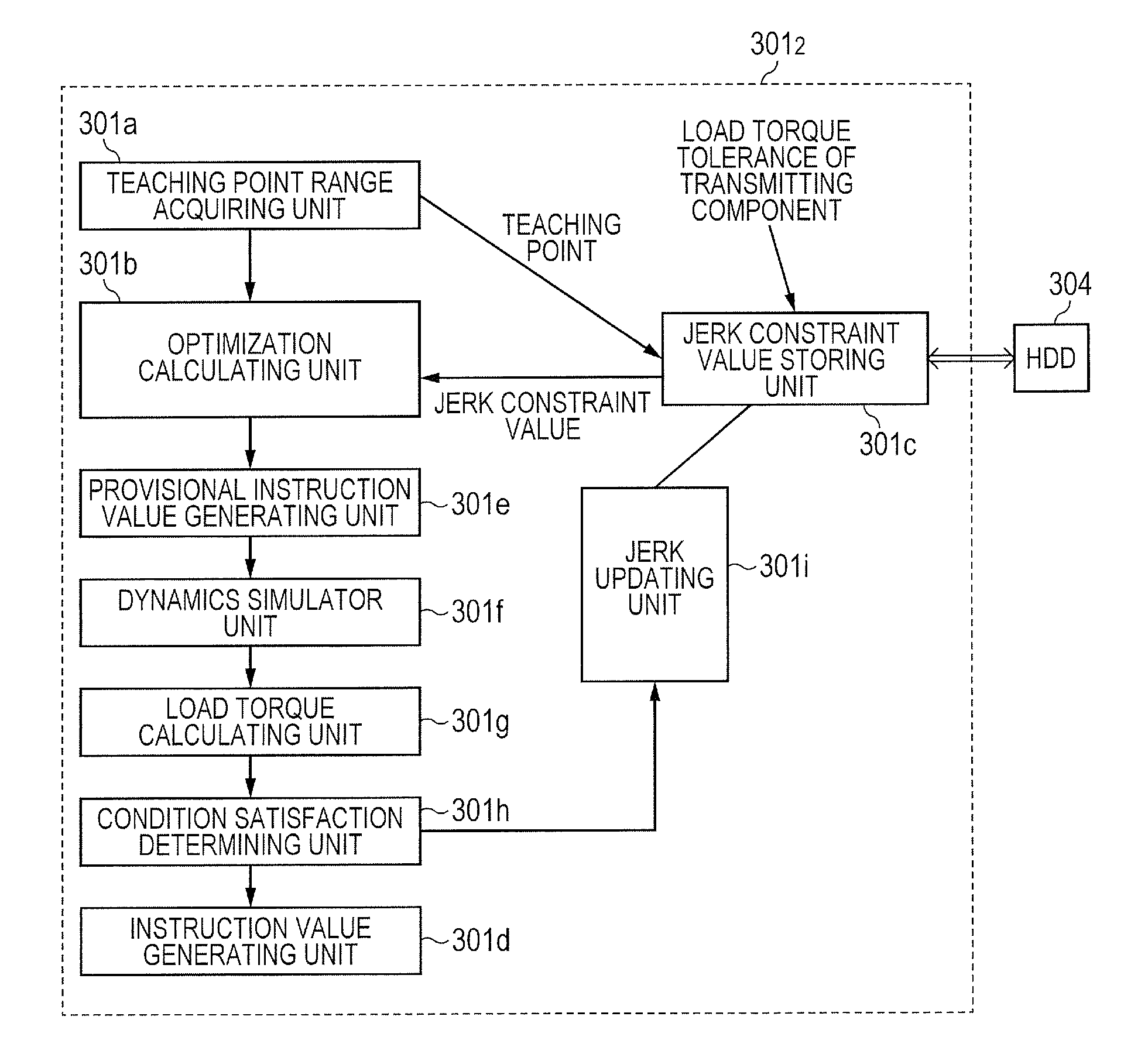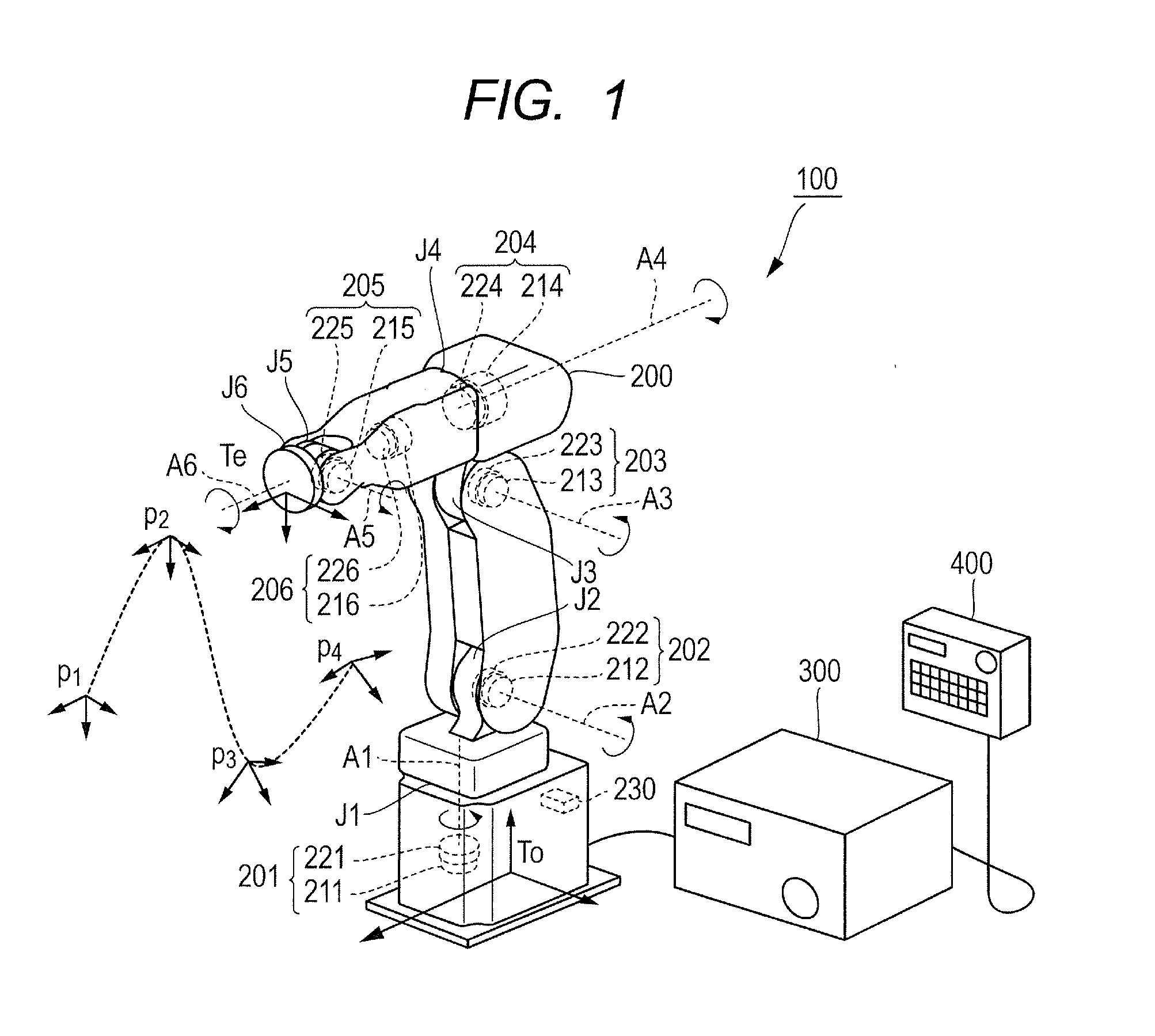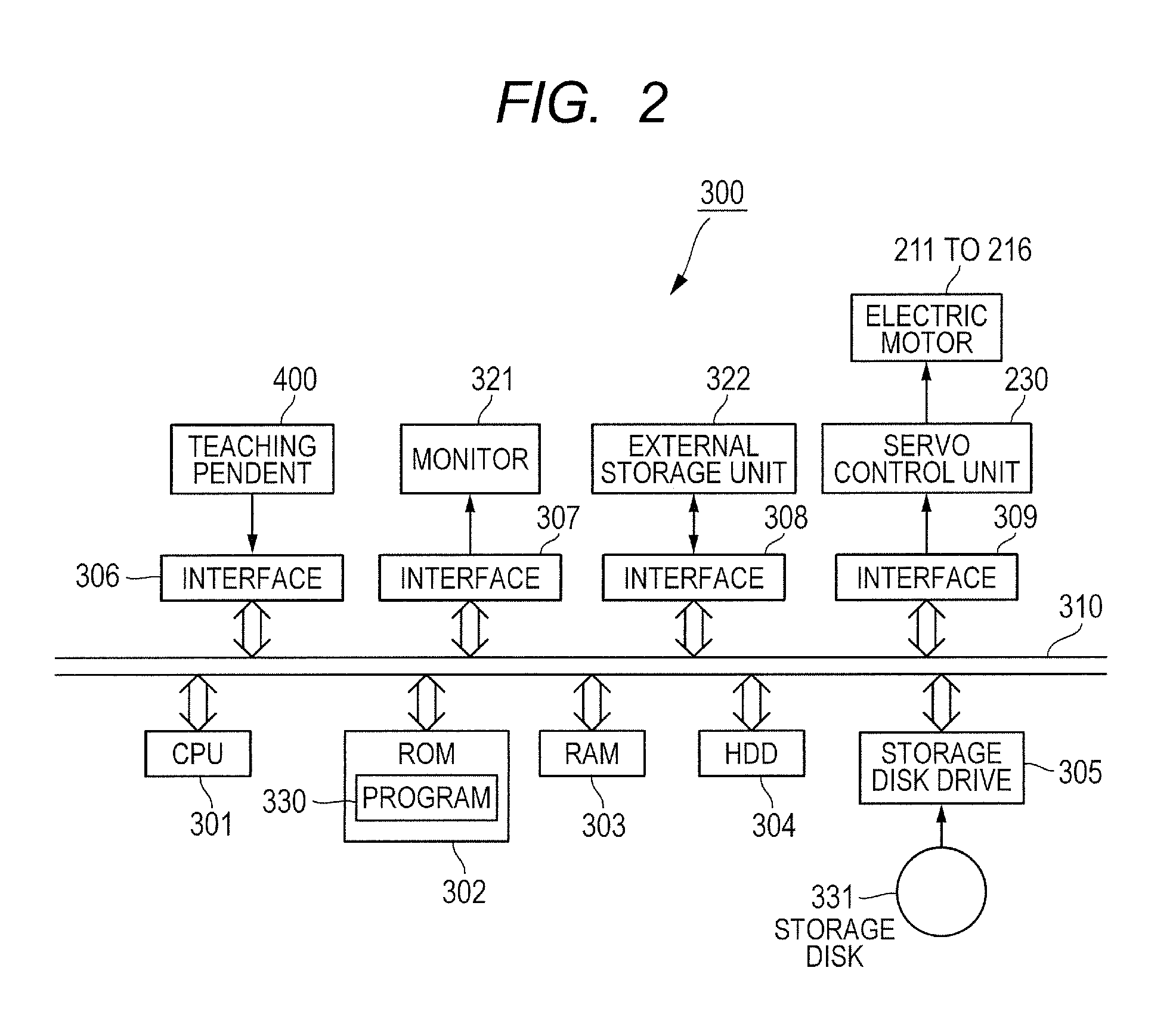Robot control apparatus and robot control method
a robot control and robot technology, applied in the field of robot control apparatus and method, can solve the problems of low rigidity of the reducer, easy vibration, and significant affecting of the takt time, and achieve the effect of improving the durability of the robot without significantly affecting the takt tim
- Summary
- Abstract
- Description
- Claims
- Application Information
AI Technical Summary
Benefits of technology
Problems solved by technology
Method used
Image
Examples
first embodiment
[0034]In the following, a first embodiment of the present invention is described with reference to FIGS. 1 to 9. First, a schematic configuration of a robot apparatus is described. As illustrated in FIG. 1, a robot apparatus 100 includes a robot arm 200 serving as a multi-joint robot, and a robot control apparatus 300 for controlling the robot arm 200. Further, the robot apparatus 100 includes a teaching pendant 400 serving as a teaching apparatus for sending data of multiple teaching points to the robot control apparatus 300. The teaching pendant 400 is operated by human, and is used to specify movement (trajectory) of the robot arm 200 and operation of the robot control apparatus 300.
[0035]In this embodiment, the robot arm 200 is a 6-joint robot, for example. The robot arm 200 includes multiple (six) actuators 201 to 206 that rotationally drive joints J1 to J6 about joint axes A1 to A6 thereof, respectively. The robot arm 200 can direct its hand (tip of the robot arm) in an arbitr...
second embodiment
[0065]Subsequently, a second embodiment of the present invention, which is obtained by partially changing the above-mentioned first embodiment, is described with reference to FIGS. 10 to 13. Note that, in the description of the second embodiment, parts similar to those of the first embodiment are denoted by the same reference symbols, and description thereof is omitted.
[0066]The second embodiment differs from the first embodiment in that the robot control apparatus 300 according to the second embodiment is configured to simulate, based on the calculation of the load torque using a dynamics model, whether or not the instruction value calculated in the optimization calculating unit 301b satisfies the constraint conditions. As a result of the simulation using the dynamics model by a dynamics simulator (movement simulator), in a case where the constraint conditions are not satisfied when the robot arm 200 is driven with the instruction value, the constraint conditions (jerk constraint v...
third embodiment
[0078]Subsequently, a third embodiment of the present invention, which is obtained by partially changing the above-mentioned first embodiment, is described with reference to FIGS. 14 and 15. Note that, in the description of the third embodiment, parts similar to those of the first embodiment are denoted by the same reference symbols, and description thereof is omitted.
[0079]The third embodiment differs from the first embodiment in that the robot control apparatus 300 according to the third embodiment is configured to calculate the torque generated when the robot arm 200 is actually driven, and learn the constraint conditions when the constraint conditions are not achieved.
[0080]Specifically, as illustrated in FIG. 14, a CPU 3013 serving as the calculating unit in the third embodiment functions as the following units in addition to the teaching point range acquiring unit 301a, the optimization calculating unit 301b, the jerk constraint value storing unit 301c, and the instruction val...
PUM
 Login to View More
Login to View More Abstract
Description
Claims
Application Information
 Login to View More
Login to View More - R&D
- Intellectual Property
- Life Sciences
- Materials
- Tech Scout
- Unparalleled Data Quality
- Higher Quality Content
- 60% Fewer Hallucinations
Browse by: Latest US Patents, China's latest patents, Technical Efficacy Thesaurus, Application Domain, Technology Topic, Popular Technical Reports.
© 2025 PatSnap. All rights reserved.Legal|Privacy policy|Modern Slavery Act Transparency Statement|Sitemap|About US| Contact US: help@patsnap.com



